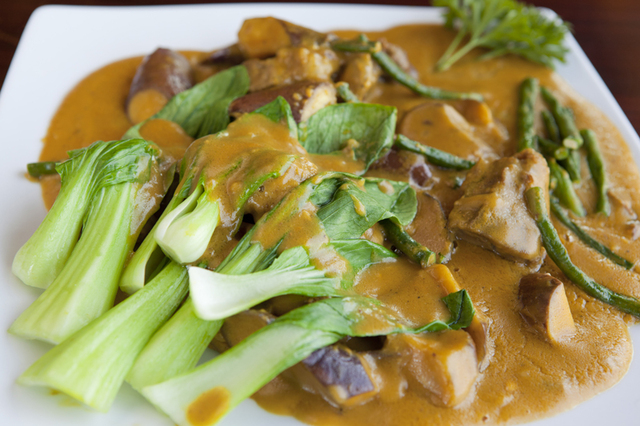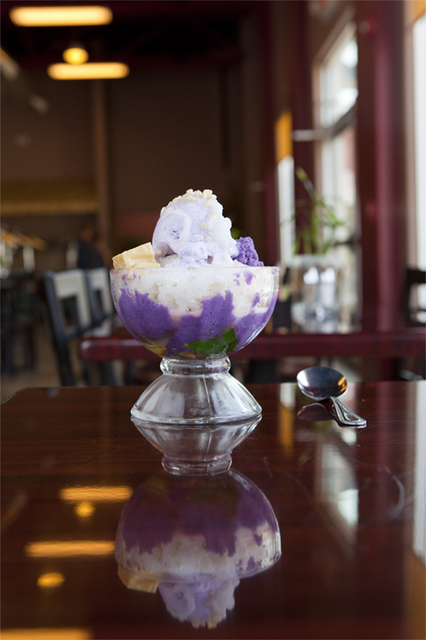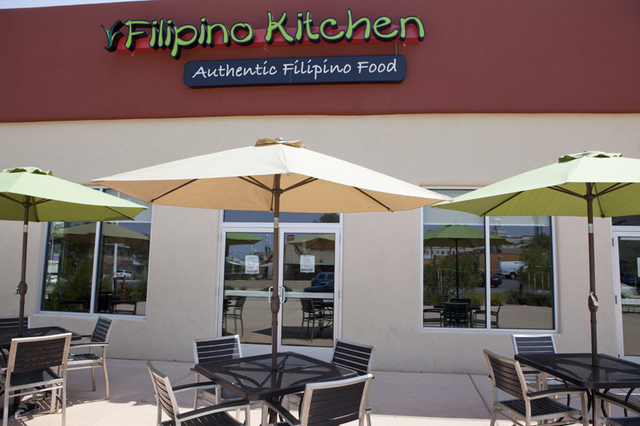The Philippines encompasses more than 7,000 islands and multiple ethnic groups. The country’s been colonized, occupied and camped upon by a slew of nations, including China, Spain, Japan and the U.S., and shaped by peoples that drifted to the islands from the South Pacific, Arabia and elsewhere in Asia. Combine these influences and give the cooks ingredients available in a tropical paradise, and the result is a cuisine as complex as the jungle, as colorful as a coral reef and full of surprises. There are more than 3 million Filipinos in the U.S. So why we don’t we see more of their food? Filipino Kitchen on Central east of Carlisle is Albuquerque’s only outpost. Before my visit, I could remember having eaten two Filipino dishes. One was adobo, meat with marinade that’s cooked down into a sauce. The second was balut, a fertilized chicken or duck egg that’s been incubated for about 20 days (until just before the feathers appear) and then simmered. When the egg is opened, its half-developed contents taste like chicken soup. They don’t serve balut at Filipino Kitchen, but unless you’re an insider, you’re bound to encounter food you’ve never seen before, like the clear tamarind soup that usually accompanies the buffet. One afternoon, it contained a simple mix of vegetables. Another evening, extra-large cubes of soft pork belly floated in the tart broth.If there’s one thing that most Filipinos can agree on, it’s the supremacy of pork. Many points between the noses and tails of swine are represented in the buffet. Some of the food looks like the Chinese or pan-Asian fare you see elsewhere, but there are some curveballs, such as crispy tilapia with scrambled eggs or pinakbet from the northern Philippines, a vegetable dish made of squash, okra, eggplant and thin slices of bitter melon. You might find Filipino menudo, which contains no tripe but pork and potatoes in a light tomato gravy. My personal favorite was dinuguan, a dark, ludicrously fatty pork dish, glistening with melted connective tissue. Many of these plates go nicely with the fried rice, which is subtle and simply fried in oil, salt and garlic with a few chopped scallions tossed in. The buffet food is good quality, but the rate of replenishment can be slow depending on the time of day, and some of the dishes can look a bit past their prime. Another caution: Don’t go to Filipino Kitchen for the salad bar, which has few veggies and less feeling. If you can hit the buffet in the morning or at lunch, it’s worth it at $9.99. And if the buffet is looking tired, consider ordering off the small a la carte menu. I fancy myself a connoisseur of oxtail, and so the kare-kare ($9.75) immediately caught my attention. Oxtails, the meaty skeletal tail stubs of cows, are stewed soft and come served with loads of bright green string beans and bok choy-like Chinese greens. It’s all smothered in a brown peanut gravy that reminded me of Thanksgiving. The meat was pure succulent succulosity, falling from its bones with greasy surrender. Somehow, we saved room in our pork-filled bellies for some Filipino flan. But not enough. One $5 slab could feed a family of four and still leave leftovers. More solid than we’re used to and with less caramelized flavor, it reminded me of a creamy dulce de leche, and arrived dressed in a sauce of shredded young coconut. Another impressive dessert is the turon de Manila, a sweet, deep-fried egg roll stuffed with banana, jackfruit and purple yam. It’s radiant with tropical sweetness and even a little fortifying.Filipino Kitchen doesn’t serve coffee or hot tea, which struck me as exotic. And speaking of beverages, the coconuts there are the most expensive I’ve seen in town ($4.50), as well as the most consistently awesome: Each specimen we tried was full of perfectly rich, sweet and buttery water. There’s one dish I have to wave you away from: It’s called palabok. I could tell something was off as soon as the waitress set it on our table. I took a small nibble of noodle out of duty and cared to proceed no further. Round, thick noodles were undercooked yet soggy, coated with a weird yellow sauce and topped with sliced boiled egg. There was pork, of course, and shrimp mixed in. Still, I’m glad that palabok is on the menu because I respect a place more if it pushes my boundaries. On that note, some day I might go in for a bowl of the pig blood soup. I’ll definitely make it back there for another kare-kare.
Filipino Kitchen3804 Central SE • 717-2368Tuesday through Saturday: 11 a.m. to 8 p.m.Sunday: 11 a.m. to 7 p.m.Monday: Closed















